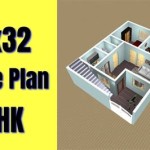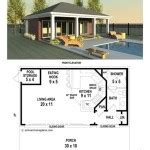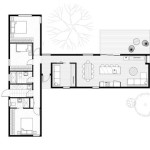Create a House Plan: Free Design for Your Dream Home Today
Designing a home represents a significant undertaking, requiring careful consideration of various factors, including lifestyle, budget, and future needs. Fortunately, numerous resources are available to assist individuals in creating house plans, and many of these resources offer free design options. These free design tools can empower individuals to visualize their dream home and develop a preliminary blueprint without incurring initial costs.
The process of creating a house plan typically involves several stages, beginning with conceptualization and progressing through refinement and detailing. The initial phase focuses on defining the essential requirements of the home, such as the number of bedrooms and bathrooms, the desired living spaces, and any specific features like a home office or a dedicated hobby room. Consideration should also be given to the overall style of the house, whether it be a traditional ranch, a modern minimalist design, or a multi-story structure. This initial stage serves as the foundation for the subsequent steps in the design process.
Once the basic requirements have been established, the next step involves creating a preliminary floor plan. This can be done using free online tools or by sketching the layout on paper. The floor plan should reflect the desired flow of spaces within the home, ensuring that rooms are logically connected and that traffic patterns are efficient. Attention should be paid to the placement of doors and windows to maximize natural light and ventilation. The size and shape of each room should be determined based on its intended use and the number of occupants it will accommodate.
After the preliminary floor plan has been developed, the next phase involves refining the design and adding details. This may include specifying the type of flooring, the style of cabinets, and the type of fixtures. The placement of electrical outlets, light switches, and plumbing fixtures should also be considered during this stage. Furthermore, attention should be given to the exterior design of the house, including the roofline, the siding, and the landscaping. The goal is to create a cohesive and aesthetically pleasing design that meets the individual's needs and preferences.
There are numerous advantages to using free design tools to create a house plan. These tools provide a cost-effective way to explore different design options and experiment with various layouts. They also offer a visual representation of the proposed home, enabling individuals to better understand the spatial relationships between rooms and to identify any potential problems before construction begins. Moreover, free design tools can facilitate collaboration between homeowners and architects or builders, allowing them to communicate their vision more effectively.
Key Point 1: Utilizing Free Online House Plan Software
Numerous online platforms offer free house plan software, varying in features and complexity. These tools typically provide a drag-and-drop interface that allows users to easily add walls, doors, windows, and furniture to create a floor plan. Some software options also include 3D visualization capabilities, enabling users to see their design in a realistic representation. It is important to research and select a software that aligns with the user's technical skills and design requirements. Factors to consider include the ease of use, the availability of pre-designed templates, the ability to customize features, and the compatibility with other design software.
When selecting a free online house plan software, it is essential to read reviews and compare features. Some software may offer limited functionality in the free version, requiring a paid upgrade to access advanced features. Users should carefully evaluate their needs and choose a software that provides the necessary tools to create a detailed and accurate house plan. Furthermore, it is important to ensure that the software is compatible with the user's operating system and hardware. Many online platforms offer tutorials and support documentation to help users learn how to use the software effectively.
One common feature found in many free online house plan software options is the ability to save and share designs. This allows users to collaborate with family members, friends, or professionals, soliciting feedback and making revisions as needed. Some software also offers the ability to export the design in various file formats, such as PDF or CAD, which can be used for printing or further editing in other design programs. The ability to export the design is particularly useful for sharing the house plan with builders or contractors for cost estimation purposes.
Beyond the basic floor plan design, some free online software options offer additional features such as landscaping tools, interior design elements, and energy efficiency calculators. These features can help users to create a more comprehensive and realistic representation of their dream home. However, it is important to remember that free software typically comes with limitations, and users may need to supplement these tools with other resources to complete the design process. For example, professional architectural advice might be needed for structural calculations and permit applications.
Key Point 2: Understanding Building Codes and Regulations
Before finalizing a house plan, it is crucial to understand and adhere to local building codes and regulations. These codes are designed to ensure the safety, health, and welfare of the occupants and the surrounding community. Building codes typically cover a wide range of aspects, including structural integrity, fire safety, electrical systems, plumbing systems, and energy efficiency. Compliance with building codes is mandatory and is typically enforced through inspections and permits.
Local building codes can vary significantly from one jurisdiction to another. It is the homeowner's responsibility to research and understand the specific requirements in their area. This information can typically be obtained from the local building department or through online resources. Failure to comply with building codes can result in costly delays, fines, and even the demolition of non-compliant structures. Therefore, it is essential to consult with a qualified professional, such as an architect or a building inspector, to ensure that the house plan meets all applicable requirements.
In addition to building codes, there may be other regulations that affect the design of a house, such as zoning ordinances and homeowner association rules. Zoning ordinances typically regulate the size, shape, and location of buildings on a property. They may also specify setbacks, height restrictions, and parking requirements. Homeowner association rules can further restrict the design and appearance of a house, including the color of the exterior, the type of landscaping, and the placement of fences.
When creating a house plan, it is important to consider the impact of the design on the environment. Sustainable design practices can help to reduce energy consumption, conserve water, and minimize waste. This may involve incorporating energy-efficient appliances, using sustainable building materials, and designing for passive solar heating and cooling. In some jurisdictions, there may be incentives or rebates available for implementing sustainable design features.
Key Point 3: Importance of Professional Consultation
While free design tools and online resources can be valuable for creating a preliminary house plan, it is generally advisable to seek professional consultation from an architect, a structural engineer, or a building designer before proceeding with construction. These professionals possess the expertise and experience to ensure that the house plan is structurally sound, meets all applicable building codes, and aligns with the homeowner's needs and budget.
An architect can provide comprehensive design services, including conceptual design, space planning, construction documents, and project management. They can help to translate the homeowner's vision into a functional and aesthetically pleasing design, while also considering factors such as site conditions, building codes, and energy efficiency. A structural engineer can provide expertise in the design of the structural components of the house, such as the foundation, walls, and roof. They can ensure that the structure is capable of withstanding the loads and stresses that it will be subjected to over its lifetime.
A building designer typically focuses on the technical aspects of the design, such as the layout of electrical, plumbing, and HVAC systems. They can also assist with the preparation of construction documents and the coordination of subcontractors. Engaging a professional consultant can help to identify potential problems early in the design process, saving time and money in the long run. They can also provide valuable advice on material selection, construction techniques, and cost-saving strategies.
The cost of professional consultation can vary depending on the scope of services required and the experience of the professional. However, the benefits of engaging a qualified professional often outweigh the costs. A well-designed house plan can result in a more comfortable, functional, and durable home that meets the homeowner's needs and preferences for years to come. Furthermore, a professionally designed house can increase the value of the property and make it easier to sell in the future.
In summary, creating a house plan is a multifaceted process that necessitates careful planning and execution. While free design tools offer a valuable starting point, understanding building codes and seeking professional consultation are crucial for ensuring the safety, functionality, and long-term value of the home. By leveraging available resources and engaging with qualified professionals, individuals can realize their dream of designing a custom home that meets their unique needs and aspirations.

How To Design A House From Sketch Reality

Free Floor Plan Creator Design 2d 3d Layouts Easily

Free Floor Plan Creator Design 2d 3d Layouts Easily

Free Floor Plan Creator Design 2d 3d Layouts Easily

Free Floor Plan Creator Design 2d 3d Layouts Easily

How To Draw A Floor Plan Live Home 3d

Dream House Plans Designs Customizable Home Floor

How To Design A House From Sketch Reality

Dream House Plans Designs Customizable Home Floor

Free Floor Plan Creator Design 2d 3d Layouts Easily
Related Posts








